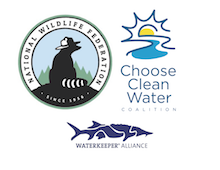Finding Peace in Nature: Stauffer’s Marsh
“Action expresses priorities” -Mahatma Gandhi
Dear Friend of WV Rivers,
It has been my honor throughout this year to share with you where our little family has traveled to across the Eastern Panhandle. These stories are crafted with love – for Wild & Wonderful West Virginia; for my wife and girls; and for my community.
But they haven’t always come easy. And like many other aspects of 2020, at times I just had to get through writing them. Just one more paragraph…just one more analogy…just one more run-on sentence…
In short, I made these stories a priority, because they are worth telling.
If you’d like to see more of these stories in 2021, we ask that you make West Virginia Rivers Coalition a priority with a year-end donation.
So without further ado, off to Stauffer’s Marsh we go!
Stauffer’s Marsh is a hidden gem nestled in the scenic Back Creek Valley. The site was placed under conservation easement in the 1990’s through the USDA Wetlands Reserve Program, restoring the fallow agricultural field back to a natural marsh ecosystem.
Donated to Potomac Valley Audubon Society in 2011, this 46-acre nature preserve is the perfect location for a short walk or to spot unique waterfowl migrating through the region (over 160+ species of birds have been found on site!). Leave your fishing poles and pets at home, and as always, leave no trace.
Wetlands like Stauffer’s Marsh account for only 5% of land across the country, but they are a powerhouse when it comes to two of our organizational priorities for 2021 – non-point source pollution, and climate change.
Non-point source pollution is everywhere. It runs off parking lots, it leaks from faulty septic systems, it is the muddy sludge coming off construction sites. As is the case with many wetlands, Stauffer’s Marsh is located directly adjacent to a stream – Back Creek – and thereby helps buffer this pristine waterway from the pollution that flows off local roads and other developed lands. (For another awesome PVAS wetland & stream combo, check out the rare marl marsh along the Bullskin Run at Cool Spring Nature Preserve.)
Healthy wetlands environments are critical to clean water, while also being a natural climate solution. Research out of West Virginia University indicates that our state could see up to a 10 degree increase in average temperatures because of increased carbon dioxide emissions in the air. Wetlands like Stauffer’s Marsh store carbon from the air in their wet soils. This small but meaningful natural process helps to prevent the worst impacts of climate change – including floods and catastrophic storms that threaten our strained economy – from impacting West Virginia communities.
In short, wetlands must be protected. They must be made a priority.
In 2020, we submitted technical comments regarding West Virginia’s Wetland Rapid Assessment Methodology to ensure our state is adequately identifying wetlands and protecting them from development activities. This is just one of many actions we took in 2020 – read them all here.
Our two-year old daughter, Emelia, enjoying nature (and a snack).
As they say, actions speak louder than words. For it is in our actions that our priorities are expressed (you can thank Gandhi for that kernel of wisdom).
Take a moment today to think about your priorities. Sit on a bench, have a snack, and allow your mind to wander…
Do you value safe, clean water? A livable climate? Protection of public lands? Fact-based policy that protects our environment and hold polluters accountable? Because we do, and we’ll continue to stand up for your priorities in the coming year.
But our actions depend on yours. Take action now by making a year-end donation.
To clean water and clean hands,
Tanner Haid, Eastern Panhandle Field Coordinator






